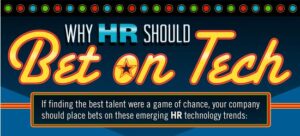![6 Fixes That Immediately Improve Your Hiring Process [Infographic]](https://talentculture.com/wp-content/uploads/2017/08/6-Fixes-That-Immediately-Improve-Your-Hiring-Process-Infographic-300x255.jpg)
6 Fixes That Immediately Improve Your Hiring Process [Infographic]
The “hiring is broken” reputation is a hard one for recruiters to shake and the hiring process is only predicted to become even harder this year. To
![6 Fixes That Immediately Improve Your Hiring Process [Infographic]](https://talentculture.com/wp-content/uploads/2017/08/6-Fixes-That-Immediately-Improve-Your-Hiring-Process-Infographic-300x255.jpg)
The “hiring is broken” reputation is a hard one for recruiters to shake and the hiring process is only predicted to become even harder this year. To

We’ve known about the importance of work environments for some time now. In a 2003 survey by Management Today, 97 percent of respondents said they
Every office is made up of different personalities with different strengths and weaknesses. For HR professionals, understanding these personalities is a key component of building
The time for being excited by emerging markets has been overtaken by the high energy and opportunities provided by frontier markets. Though there are a number

A competitive salary, fun work environment, and exciting perks all play a large role in keeping employees happy and engaged, but it’s not enough to
Here’s the problem: You know you’ve got job openings to fill, and while there are plenty of candidates willing to step in, they aren’t qualified.

Google received over a million applications last year. For the fifth year running, it was named #1 on Fortune’s list of the Top 100 Companies

How can employers map out a more effective internship program? This infographic offers insights from student employment data…

Do you think the gender pay gap is a thing of the past? This infographic tells a much different story…

How can employers improve their odds of landing top talent in today’s recruiting game? This infographic shows why new HR technology is a smart bet…

What’s the best compensation strategy for interns — pay or no pay? This infographic helps employers weigh pros and cons

Is your organization facing barriers that stand in the way of employee engagement? Try these tips to overcome 6 key obstacles. (Includes infographic.)